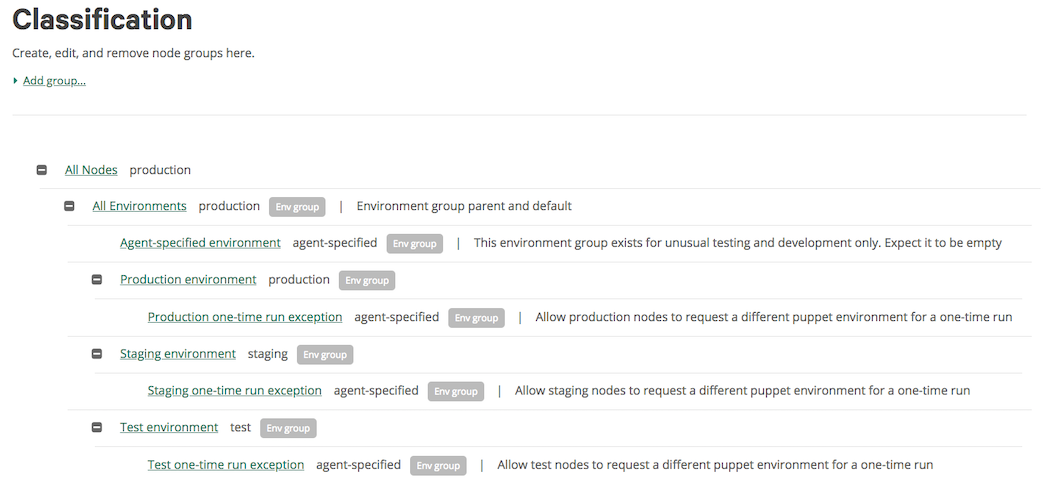Integrate with Puppet Enterprise
To set up an integration between your Puppet Enterprise (PE) instance and Continuous Delivery for PE, you must first set up a dedicated PE user with appropriate permissions, then add your PE instance's credentials to Continuous Delivery for PE.
- You must enable Code Manager on the PE instance before integrating with Continuous Delivery for PE. For instructions, see Configuring Code Manager.
- The Puppet master certificate must have
dns_alt_namesconfigured. To confirm whether your certificate is configured correctly, run:
If no output is returned, the master certificate must be regenerated before PE is integrated with Continuous Delivery for PE. For instructions, see Regenerate master certificates in the PE documentation.openssl x509 -in $(puppet config print hostcert) -text |grep -A 1 "Subject Alternative Name"
Create a Continuous Delivery user and user role in PE
Create a "Continuous Delivery" user and user role in PE. This allows you to view a centralized log of the activities Continuous Delivery for PE performs on your behalf. You'll also use this user account when generating the PE authentication token required by the setup process.
Add your Puppet Enterprise credentials
Establishing an integration with your Puppet Enterprise (PE) instance allows Continuous Delivery for PE to work with PE tools such as Code Manager and the orchestrator service to deploy Puppet code changes to your nodes.
Your PE instance is now integrated with Continuous Delivery for PE.
To enable impact analysis for this instance, see Configure impact analysis.
Create environment node groups
In order for code deployments managed by Continuous Delivery for PE to work correctly, your environment node groups should be set up in a specific hierarchy.
Continuous Delivery for PE deploys changes to environment node groups. By setting up environment node groups, you define the groups of nodes that you can choose to deploy changes to.
The resulting environment node groups has a format similar to this:

Now that your environment nodes groups are configured, we can deploy new code to your nodes.